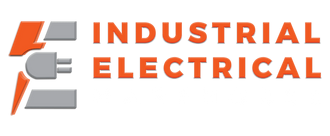Trapped key interlocks are crucial components in ensuring electrical safety in industrial environments. They provide a controlled and secure method to manage hazardous energy, preventing accidental machine startups and ensuring that safety protocols are followed. This article will explore the benefits and functionality of trapped key interlocks for industrial electrical systems, giving you a better understanding of why they are essential for operational safety.
What is a Trapped Key Interlock?
Understanding the Concept
A trapped key interlock is a mechanical device that helps control operations in industrial settings by enforcing a predetermined sequence. When certain operations are performed, keys are released or trapped, ensuring that safety measures are adhered to. For example, an operator cannot access a machine unless a key is inserted and the machine is turned off. This system not only prevents accidental operation but also protects personnel from hazardous situations.
How Trapped Key Interlocks Work
These interlocks function by preventing the removal of keys until specified actions are completed. The process typically involves isolating hazardous energy, followed by key exchange that regulates access to certain operations. This sequence creates a safety lockout that ensures that workers cannot access potentially dangerous machinery without proper precautions in place. Overall, trapped key interlocks enhance safety by reducing the risk of human error.
Benefits of Trapped Key Interlocks
Increased Safety
One of the most significant advantages of using trapped key interlocks is enhanced safety. They ensure that machines can only be operated when it is safe to do so, protecting operators from injuries caused by unintended machine activations. By enforcing safety protocols, trapped key interlocks significantly reduce the chances of accidents occurring in hazardous environments.
Preventing Human Error
Human error is a leading cause of accidents in industrial settings. Trapped key interlocks help mitigate this risk by enforcing a series of actions that must be completed in order. For example, an operator cannot remove the key required to operate machinery until they have completed all safety checks. This requirement eliminates shortcuts and keeps processes in order.
Compliance with Safety Regulations
Many industries are governed by strict safety regulations. Implementing trapped key interlocks helps organizations comply with these regulations by ensuring that all safety protocols are enforced. This compliance can result in fewer workplace accidents, reducing legal risks and enhancing employee morale.
Applications of Trapped Key Interlocks
Industrial Manufacturing
Trapped key interlocks are widely used in manufacturing environments, where machinery can pose significant safety risks. By ensuring operators cannot access equipment without proper safety checks, these interlocks play a vital role in safe manufacturing processes. They are commonly used on presses, conveyor systems, and heavily automated machinery to enforce strict safety protocols.
Energy Production Facilities
In energy production facilities, trapped key interlocks protect personnel when working around potentially hazardous energy sources like electrical equipment and high-pressure systems. These interlocks ensure that proper isolation procedures are followed and that workers cannot accidentally energize equipment while performing maintenance tasks.
Food and Beverage Industry
The food and beverage sector utilizes trapped key interlocks to maintain safety during the processing and packaging of products. By ensuring workers are protected from moving parts and hazardous processes, these interlocks help maintain compliance with health and safety standards while ensuring the smooth operation of manufacturing lines.
Choosing the Right Trapped Key Interlock System
Factors to Consider
When selecting a trapped key interlock system, several factors should be taken into consideration. The complexity of the machinery, the degree of hazard present, and specific operational requirements all play a role in determining the appropriate interlock solution. It is also vital to assess the industrial environment where the interlocks will be installed, as factors like moisture, dust, and temperature can impact the effectiveness of the system.
Consulting with Experts
Consulting safety experts or engineers experienced in industrial safety solutions can provide valuable insights when selecting the right system. They can analyze existing protocols and recommend trapped key interlocks that best suit the operational needs, ensuring compliance with industry standards and enhancing overall safety.
Conclusion
Trapped key interlocks are integral to effective safety strategies in industrial environments. They not only provide a controlled access mechanism for hazardous operations but also mitigate the risks posed by human error. By implementing these systems, organizations can enhance worker safety, comply with regulations, and maintain operational integrity. The investment in trapped key interlocks is an investment in the safety and wellbeing of all personnel.
Key Takeaways
- Trapped key interlocks enhance safety by ensuring machines cannot be operated without following safety protocols.
- They help to prevent human error by enforcing a sequence of operation.
- The applications of trapped key interlocks span across various industries, including manufacturing, energy production, and food processing.
FAQs
What is the primary function of trapped key interlocks?
The primary function of trapped key interlocks is to ensure safety by preventing the operation of machinery until specific safety conditions have been met. They enforce a predetermined sequence of operations that must be followed.
In which industries are trapped key interlocks commonly used?
Trapped key interlocks are commonly used in various industries such as manufacturing, energy production, and the food and beverage sector to enhance safety and compliance with regulations.
How do trapped key interlocks reduce the risk of accidents?
Trapped key interlocks reduce the risk of accidents by ensuring that machinery can only be operated when it is safe to do so, preventing unauthorized access to hazardous equipment.
Where can I find reliable trapped key interlock solutions?
You can find reliable trapped key interlock solutions from specialized manufacturers and suppliers. For example, visit here to explore options like the Allen-Bradley Prosafe Rotary Switch with Trapped Key.


